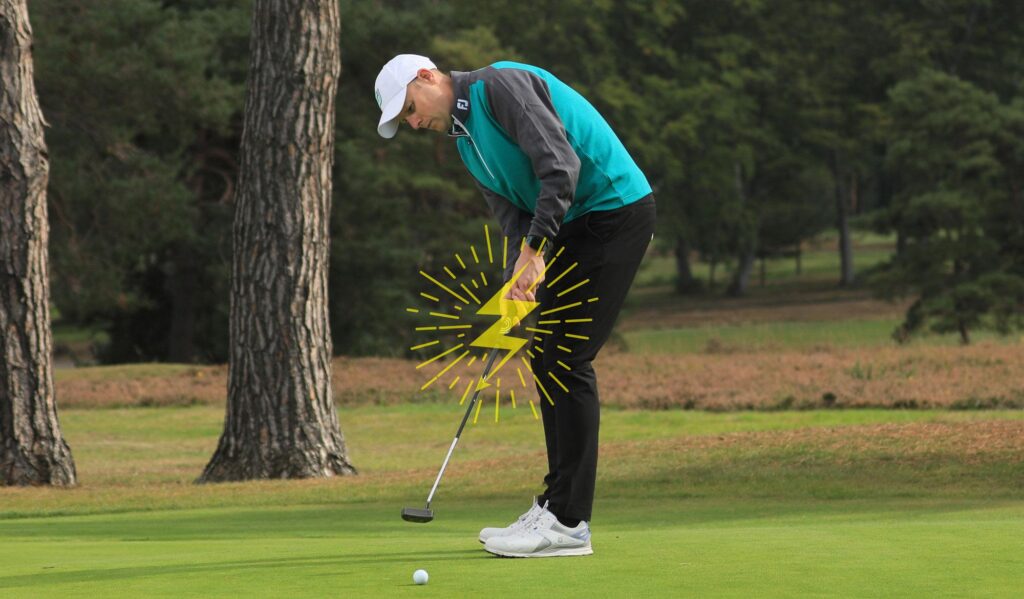Breaking Down the Yips: 3 Practical Solutions for Golf’s Most Frustrating Foe
In the world of golf, few phenomena conjure as much frustration and confusion as the elusive “putting yips.” This debilitating condition, characterized by involuntary spasms during the putting stroke, can turn even the most skilled players into nervous wrecks on the green. While the causes of the yips remain a topic of much debate among players and professionals alike, the resulting anxiety is universally recognized. As tournaments approach and casual rounds are threatened, golfers are seeking effective strategies to combat this perplexing issue. In this article, we explore three practical methods designed to help players regain confidence and precision in their short game, ultimately enabling them to master the art of putting once again. Whether you’re an amateur looking to improve your weekend rounds or a seasoned player battling a sudden onset of the yips, these solutions aim to provide a pathway back to the smooth, confident strokes that every golfer longs to achieve.
Understanding the Root Causes of the Putting Yips
The phenomenon that golfers refer to as the putting yips is often a complex interplay of psychological and physiological factors. At the core, it’s a stark example of how the mind can interfere with the physical act of putting. Typically, this condition manifests when a golfer experiences a sudden loss of control over their putting stroke, leading to erratic and uncharacteristic misses. Anxiety, self-doubt, and the fear of failure can become overwhelming, mainly when the pressure is on during competitions or crucial moments in a round. This mental block creates a vicious cycle where the anticipation of a poor performance leads to more erratic actions, reinforcing the yips further.
Furthermore, the yips can have a physical dimension, too, where muscle tension or involuntary movements play a significant role in the process. Golfers might develop a habit of gripping the putter too tightly, leading to jittery, inconsistent strokes. In some cases, these issues can stem from a lack of consistent practice or a negative experience on the green that conditions the mind toward failure. It’s essential to acknowledge the variety of symptoms experienced, which can include:
- Jerky motions – sudden spasms during the putting swing.
- Irregular rhythm – an inability to maintain a steady stroke.
- Overthinking – excessive focus on mechanics instead of the goal.
Effective Techniques to Overcome Anxiety and Enhance Your Short Game
To effectively combat the unsettling sensations associated with the putting yips, golfers can implement several strategies aimed at recalibrating their mental approach. One effective technique is the practice of mindfulness. By focusing solely on the present moment, players can reduce stress and eliminate distractions. Engaging in deep breathing exercises before addressing the ball can also ground the golfer, allowing them to channel their thoughts away from negative outcomes. Establishing a consistent pre-shot routine is crucial; it creates a sense of familiarity and control, thus defining a space where anxiety has no place.
Another practical method is the use of visualization. This entails picturing a successful putt before stepping up to the ball, helping to build confidence and ease tension. It can be beneficial to maintain a positive self-talk mantra, encouraging a mindset focused on success rather than fear. Incorporating practice drills that focus on rhythm and flow, rather than strict mechanics, can also enhance performance while reducing anxiety. Consider setting up a simple table of exercises for better organization of practice sessions:
| Exercise | Description |
|---|---|
| Deep Breathing | Five deep breaths before each putt to calm nerves. |
| Visualization | Picture the perfect putt in your mind. |
| Positive Self-Talk | Use affirmations to cultivate a success-oriented mindset. |
| Rhythm Drills | Practice with a focus on flow rather than mechanics. |
Closing Remarks
In conclusion, overcoming the putting yips requires a combination of mental fortitude, practical strategies, and consistent practice. By implementing these three actionable methods-enhancing your pre-putt routine, focusing on visualization techniques, and engaging in drills that promote confidence-you can regain your touch on the greens. Whether you’re a seasoned golfer or a novice, remember that the path to improvement is often paved with patience and perseverance. As the golfing community continues to address this frustrating phenomenon, applying these insights could be your ticket to a more assured putting stroke, unlocking your potential and enhancing your overall game. Keep practicing, and the yips could soon become a thing of the past.








